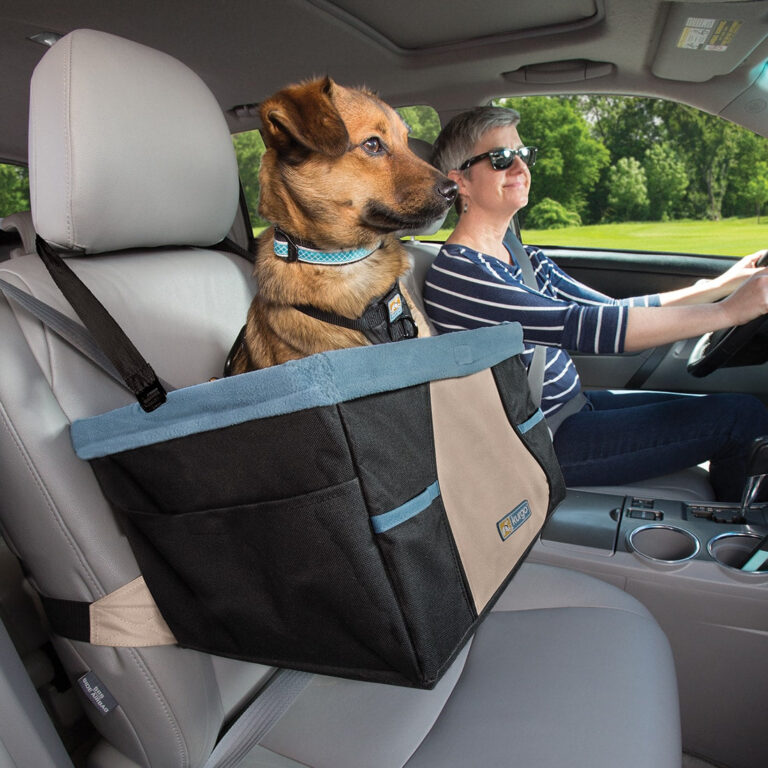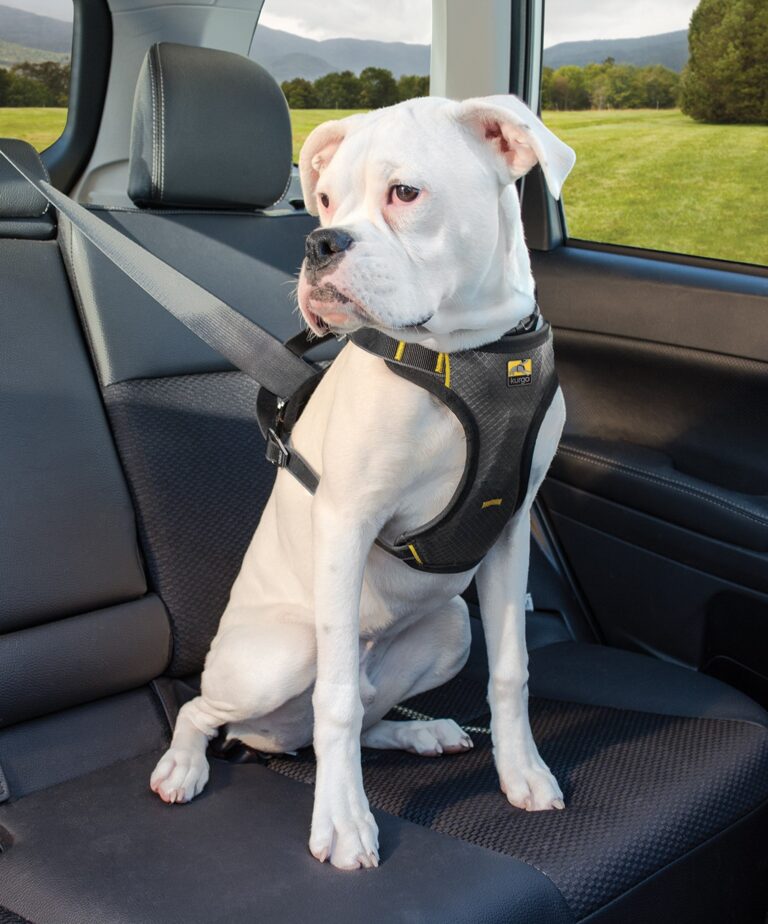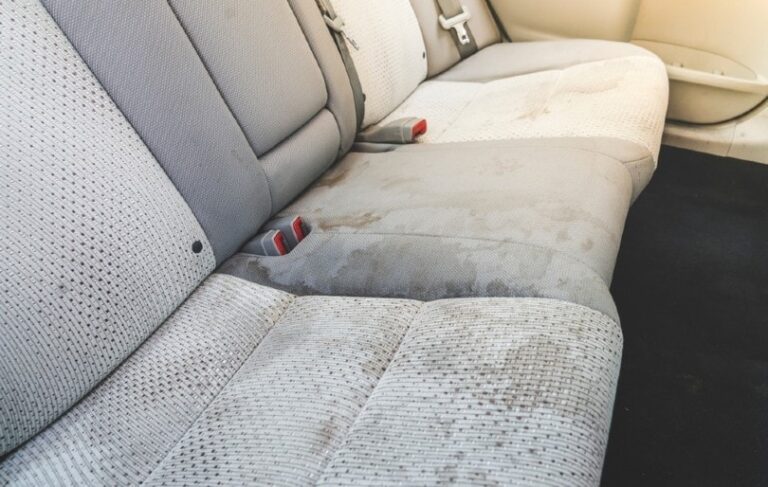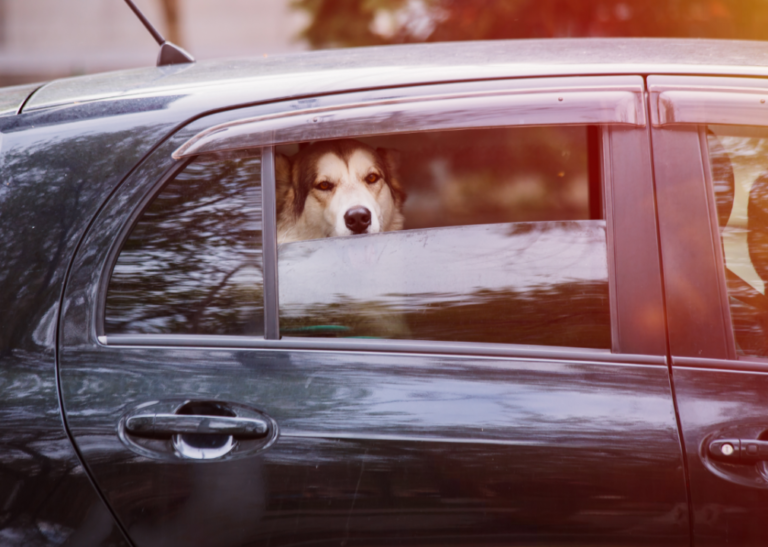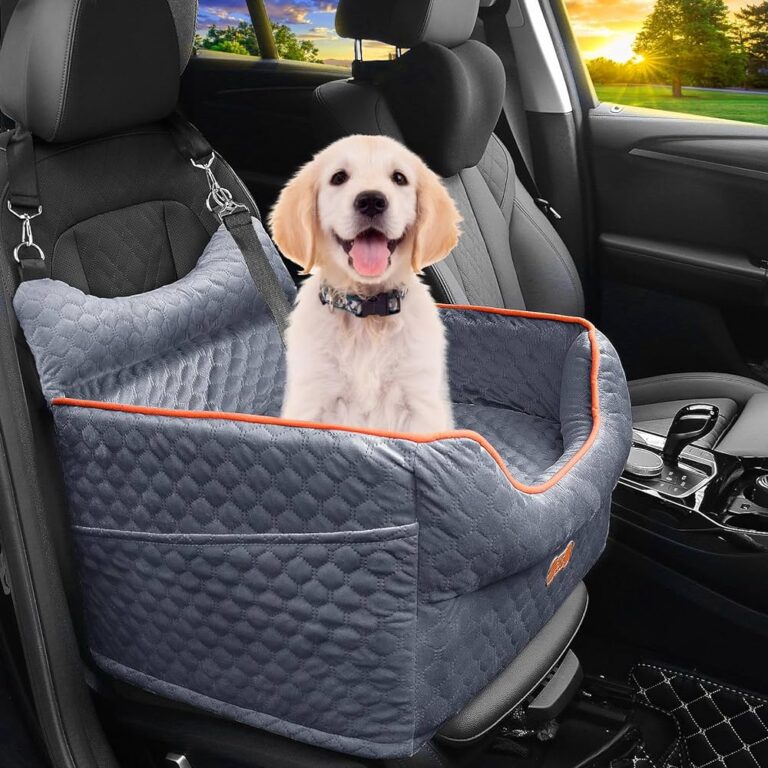How Should a Dog Sit in the Car? Safety & Comfort Tips
A dog should sit in the car with a harness or in a secured crate. This ensures safety and comfort during travel.
Traveling with your dog can be a fun and enjoyable experience. Ensuring your pet’s safety in the car is crucial. Use a harness that attaches to the seatbelt or place your dog in a secured crate. This prevents distractions and keeps your dog safe in case of sudden stops.
Avoid letting your dog roam freely in the car. An unsecured dog can become a projectile, posing a risk to both the pet and passengers. Keeping your dog secure also helps reduce anxiety and motion sickness. Proper seating arrangements lead to a safer and more pleasant journey for everyone involved.
Introduction To Dog Safety In Cars
Ensuring your dog’s safety in the car is very important. Dogs need proper seating to stay safe during travel. This guide helps you understand why it matters.
Why It Matters
Proper seating keeps your dog safe during car rides. A safely seated dog reduces distractions for the driver. This can prevent accidents.
Dogs are family members. They deserve the same care as any passenger. Proper seating also helps your dog feel more comfortable during trips.
The Risks Of Improper Seating
Improper seating can be very dangerous for dogs. Dogs can get injured in sudden stops or accidents. They might get thrown around the car. <pImproper seating can distract drivers. A loose dog can jump on the driver. This can cause accidents.
Dogs can also escape through open windows if not properly seated. This is unsafe for both the dog and others on the road.
| Proper Seating | Improper Seating |
|---|---|
| Dog harnessed or in a crate | Dog free to move around |
| Dog in the back seat | Dog in the front seat |
| Windows closed or slightly open | Windows fully open |
- Use a dog seat belt or harness.
- Place dogs in the back seat.
- Keep windows closed or only slightly open.
Legal Requirements For Transporting Dogs
Ensuring your dog sits properly in the car is not just about safety; it is also about following the law. Legal requirements for transporting dogs vary by state, and non-compliance can result in penalties. This section covers the essential legal guidelines you need to know.
State-specific Laws
Each state in the U.S. has its own rules for transporting dogs in vehicles. Some states have strict regulations, while others are more lenient. Below is a table that highlights some of the state-specific laws:
| State | Legal Requirement |
|---|---|
| California | Dogs must be restrained with a harness or in a crate. |
| Hawaii | Dogs cannot sit on the driver’s lap. |
| New Jersey | Dogs must be restrained in a crate or with a harness. |
| Maine | Dogs must not stick their heads out of windows. |
Penalties For Non-compliance
Not following these laws can lead to fines and penalties. Here are some examples:
- In California, fines can reach up to $250 for an unrestrained dog.
- In Hawaii, driving with a dog on your lap can result in a fine of $97.
- New Jersey imposes fines ranging from $250 to $1,000 for unrestrained dogs.
- Maine can issue fines if a dog is seen sticking its head out of the window.
Understanding these laws helps you keep your dog safe and avoid fines. Make sure to check your state’s specific requirements before hitting the road with your furry friend.
Choosing The Right Restraint System
Ensuring your dog’s safety in the car is crucial. Choosing the right restraint system can make trips safer and more enjoyable. Let’s explore two popular options: harnesses and seat belts, and crates and carriers.
Harnesses And Seat Belts
Harnesses and seat belts are effective for keeping your dog secure. They prevent sudden movements that could harm your pet. Here are some key points to consider:
- Comfort: Choose a harness that fits snugly but comfortably.
- Durability: Ensure the material can withstand wear and tear.
- Ease of Use: The harness should be easy to put on and take off.
Using a harness with a seat belt attachment is simple. Just clip the harness to the car’s seat belt. Your dog can sit or lie down comfortably while staying safe.
Crates And Carriers
Crates and carriers offer a secure space for your dog. They can be especially useful for smaller dogs or long trips. Consider the following:
- Size: The crate should be large enough for your dog to stand and turn around.
- Ventilation: Ensure good air flow to keep your dog comfortable.
- Sturdiness: Choose a crate made of strong, durable materials.
Secure the crate with the car’s seat belt or special straps. This prevents it from moving during the drive. Your dog will feel safe and secure inside the crate.
Here’s a quick comparison table for harnesses and crates:
| Feature | Harnesses and Seat Belts | Crates and Carriers |
|---|---|---|
| Comfort | High | Medium |
| Ease of Use | High | Medium |
| Security | Medium | High |
Installation Of Dog Car Seats
Ensuring your dog sits safely in the car is very important. Proper installation of dog car seats guarantees comfort and security. This guide helps you install your dog’s car seat correctly.
Step-by-step Guide
- Select a Suitable Car Seat: Choose a car seat that fits your dog’s size and weight.
- Read the Manual: Always read the instruction manual provided with the seat.
- Position the Seat: Place the car seat in the back seat of your vehicle.
- Attach the Straps: Use the seat belt to secure the car seat. Follow the manufacturer’s guidelines.
- Secure Your Dog: Use the harness to secure your dog in the car seat. Ensure it’s snug but not too tight.
Ensuring Stability
Stability is key for your dog’s safety. A stable car seat prevents sudden movements.
- Check the Straps: Ensure the straps are tightly fastened.
- Inspect Regularly: Regularly check the car seat for any signs of wear and tear.
- Use Non-Slip Mats: Place a non-slip mat under the car seat for added stability.
- Test the Installation: Give the car seat a gentle shake to ensure it doesn’t move.
By following this guide, you ensure your dog’s car seat is installed correctly. This guarantees a safe and comfortable ride for your furry friend.
Training Your Dog For Car Rides
Training your dog for car rides is crucial for their safety and your peace of mind. Proper training ensures your dog remains calm and seated during trips. This helps prevent distractions while driving and keeps your dog safe.
Acclimatization Techniques
Acclimatizing your dog to car rides is the first step. Start with short trips around the block. Gradually increase the duration of each ride. Use treats to reward calm behavior.
Park the car and let your dog explore the back seat. This makes the car a familiar place. Repeat this process over several days.
Play soothing music during the ride. This can help relax your dog. Avoid loud or sudden noises. These can scare your dog and make them anxious.
Behavioral Tips
Teach your dog basic commands like “sit” and “stay” before car rides. This ensures they remain seated during the trip. Use a firm but gentle tone when giving commands.
Use a harness or dog seat belt. This keeps your dog secure and prevents movement. A harness also distributes pressure evenly, making it comfortable.
Provide a comfortable spot for your dog to sit. Use a blanket or dog bed. This makes the ride more pleasant and reduces anxiety.
Take breaks during long trips. Let your dog stretch and relieve themselves. This helps keep them comfortable and reduces stress.
| Step | Action | Purpose |
|---|---|---|
| 1 | Short Trips | Acclimatization |
| 2 | Reward Calm Behavior | Positive Reinforcement |
| 3 | Use Harness | Safety and Security |
| 4 | Provide Comfortable Spot | Reduce Anxiety |
| 5 | Take Breaks | Comfort and Stress Reduction |
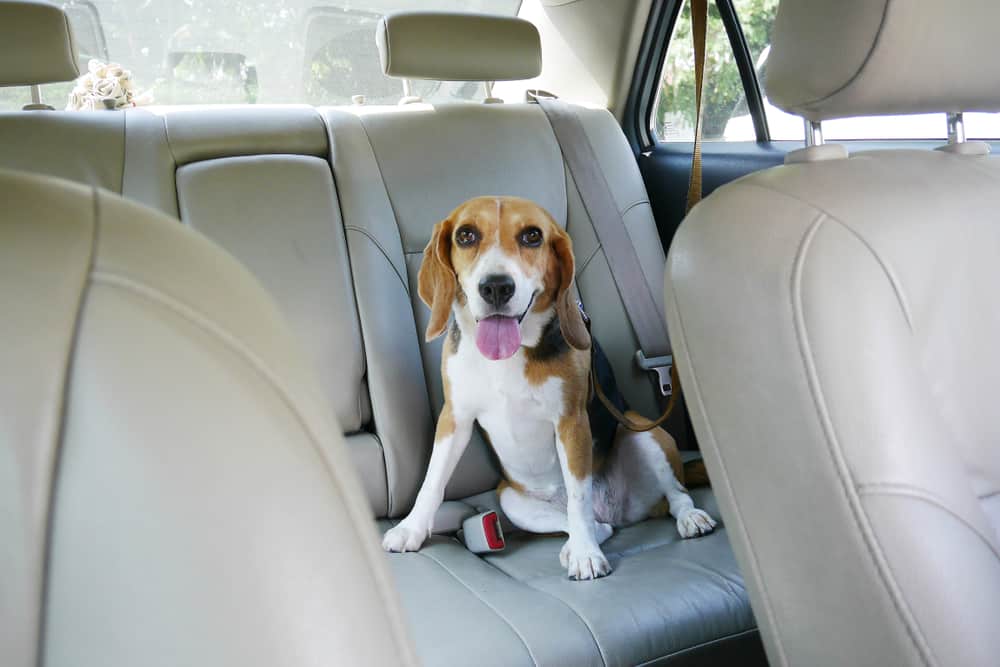
Credit: www.dogingtonpost.com
Comfort Measures For Long Trips
Traveling with your dog can be a joy, but long trips need special planning. Ensuring your dog is comfortable is crucial. Here are some essential tips to make long trips enjoyable for your furry friend.
Adequate Padding
Adequate padding is essential for your dog’s comfort. Use a soft, cushioned seat cover. It helps reduce pressure on their joints and muscles. Consider using a pet car seat or booster seat. These provide extra padding and support.
For larger dogs, a thick blanket or foam mat can work well. Ensure the padding is non-slip to keep your dog secure during the ride. Regularly check the padding to make sure it remains comfortable and clean.
Temperature Control
Temperature control is vital for your dog’s comfort during long trips. Ensure the car is well-ventilated. Open windows slightly or use air conditioning to keep the temperature pleasant.
Avoid direct sunlight on your dog. Use sunshades on the windows to block harsh rays. Always have fresh water available to keep your dog hydrated.
Check the temperature regularly. If it feels too hot or cold for you, it’s the same for your dog. Adjust the settings to maintain a comfortable environment.
Safety Checks Before Departure
Before hitting the road with your furry friend, it’s crucial to perform some safety checks. Ensuring your dog is safe and comfortable can make your trip enjoyable for both of you. Let’s dive into the essential safety checks before you depart.
Restraint System Inspection
First, inspect your dog’s restraint system. A good restraint keeps your dog secure during the journey. Look for any signs of wear and tear on the harness or seat belt. Make sure the buckles and clips are working properly.
Ensure the restraint system fits your dog snugly. A loose harness can cause injuries during sudden stops. Check the manufacturer’s guidelines for the proper fit.
| Inspection Points | Details |
|---|---|
| Wear and Tear | Check for frayed straps, damaged buckles. |
| Proper Fit | Ensure the harness is snug but not too tight. |
| Functionality | Test buckles and clips for secure closure. |
Emergency Preparedness
Being prepared for emergencies is vital. Always carry a pet first aid kit. Include items like bandages, antiseptic wipes, and tweezers. Knowing basic pet first aid can save your dog’s life.
Have your vet’s contact information handy. This is crucial in case of unexpected health issues. Also, keep a list of emergency veterinary clinics along your route.
- First Aid Kit: Bandages, antiseptic wipes, tweezers.
- Vet Contact: Your vet’s phone number and address.
- Emergency Clinics: List of nearby vet clinics.
Lastly, ensure your dog wears an ID tag with your contact information. This is essential if your dog gets lost.
By performing these safety checks before departure, you ensure a safer journey for your dog. Happy travels!
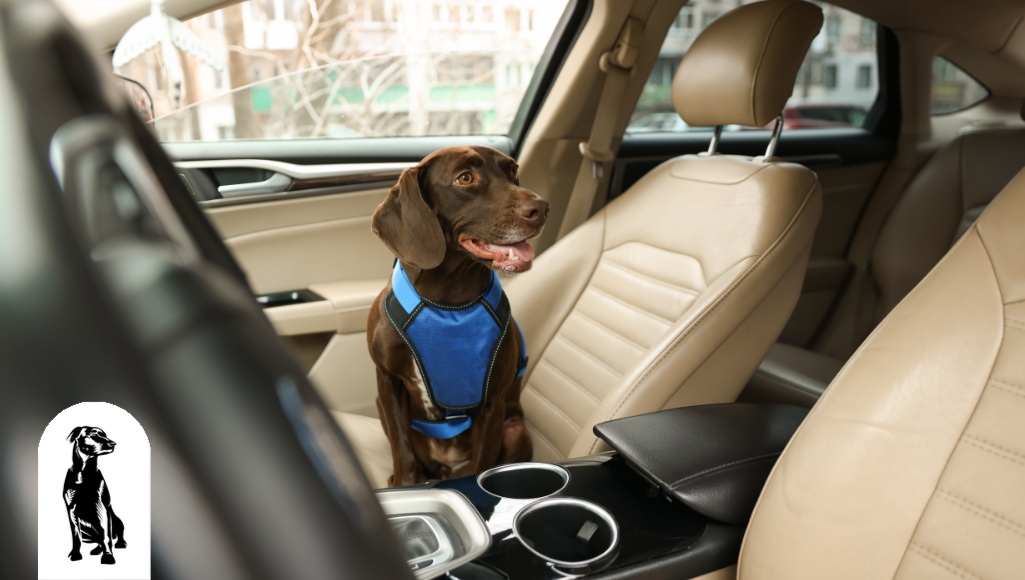
Credit: plushpawsproducts.com
Troubleshooting Common Issues
Traveling with your dog can be a joyful experience. But sometimes, issues can arise that make the ride less pleasant. Below, we will discuss some common problems and how to fix them.
Motion Sickness
Motion sickness is a common issue for dogs in cars. It can make them feel dizzy and nauseous. Some symptoms include:
- Drooling
- Whining
- Vomiting
To help your dog, try these tips:
- Feed them a light meal a few hours before the trip.
- Keep the car cool and well-ventilated.
- Use a dog car seat to keep them steady.
Sometimes, taking short trips can help your dog get used to the car.
Anxiety And Restlessness
Anxiety and restlessness can make car rides stressful for dogs. Signs include:
- Panting
- Pacing
- Barking
Here are some ways to calm your dog:
- Use a dog seat belt or crate to make them feel secure.
- Bring their favorite toy or blanket.
- Play calming music during the ride.
Training your dog to associate the car with positive experiences can also help.
Post-trip Care And Considerations
After a long car ride with your dog, it’s important to focus on Post-Trip Care and Considerations. This ensures your furry friend remains happy and healthy. Below are some essential aspects to consider.
Post-ride Inspection
Inspect your dog for any signs of discomfort or injury. Look for cuts, bruises, or any limping. Check your dog’s eyes for redness or irritation.
Ensure your dog’s paws are clean. Sometimes, debris can get stuck in their paws during car rides. Examine their fur for any ticks or fleas.
Check your car’s interior for any signs of damage. Dogs can sometimes chew on seats or seat belts. Make sure everything is intact and safe for future rides.
Rewarding Good Behavior
After a ride, it’s important to reward your dog for good behavior. This reinforces positive actions and makes future trips more enjoyable.
You can give your dog a treat or a favorite toy. Praise your dog with words like “Good job!” or “Well done!” A little affection goes a long way.
Below is a table showing different types of rewards and their benefits:
| Type of Reward | Benefit |
|---|---|
| Treats | Immediate gratification and positive reinforcement |
| Toys | Engagement and distraction |
| Verbal Praise | Emotional bonding and reassurance |
Consistency is key. Make sure to reward your dog after every ride. This will help them associate car rides with positive experiences.
Credit: www.reddit.com
Frequently Asked Questions
How Should Your Dog Ride In The Car?
Secure your dog with a seat belt harness or crate. Keep them in the back seat. Ensure good ventilation. Avoid letting your dog hang their head out the window. Never leave your dog alone in the car.
Should Dogs Sit In The Front Or Back Of A Car?
Dogs should sit in the back of the car. This ensures their safety and minimizes distractions for the driver. Use a dog seat belt or crate for added protection.
Where Do Dogs Have To Sit In The Car?
Dogs should sit in the back seat or in a crate. Use a pet seat belt or harness for safety. Avoid the front seat due to airbags. This ensures a safe and comfortable trip for your dog.
Should Dogs Go In The Boot Or Back Seat?
Dogs can travel in the back seat or boot. Use a harness or crate for safety. Ensure proper ventilation.
Conclusion
Ensuring your dog sits safely in the car is crucial. Use harnesses or carriers to prevent accidents. Regular breaks help keep them comfortable. Following these tips will make car rides enjoyable and secure for your furry friend. Safe travels!
- Can I Get in a Taxi Without a Car Seat? - January 26, 2025
- Can I Get Chlamydia From a Toilet Seat? - January 26, 2025
- Can I Get an Uber With a Car Seat? - January 26, 2025

